Why Does My Monstera Have Yellow Leaves
Written by Ivy
Jan 05 2023
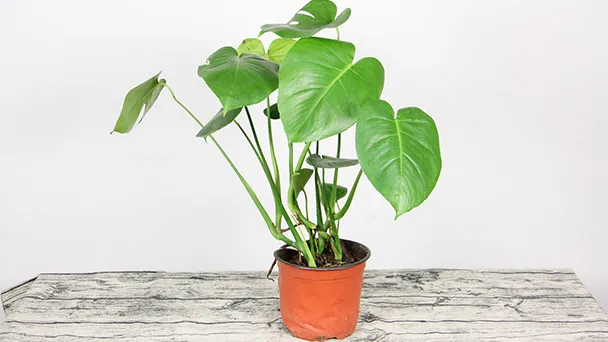
The biggest feature of Monstera is its very shiny emerald leaves. There are unique cracks on the leaf surface, and the cracks on the leaf surface are particularly unique. The leaves of potted Monstera indoors will turn yellow, which is nothing more than those reasons, such as improper watering, dry air, inappropriate lighting, temperature change, failure to recover after transplanting, infection with diseases and pests, improper fertilization or natural aging of leaves, etc.
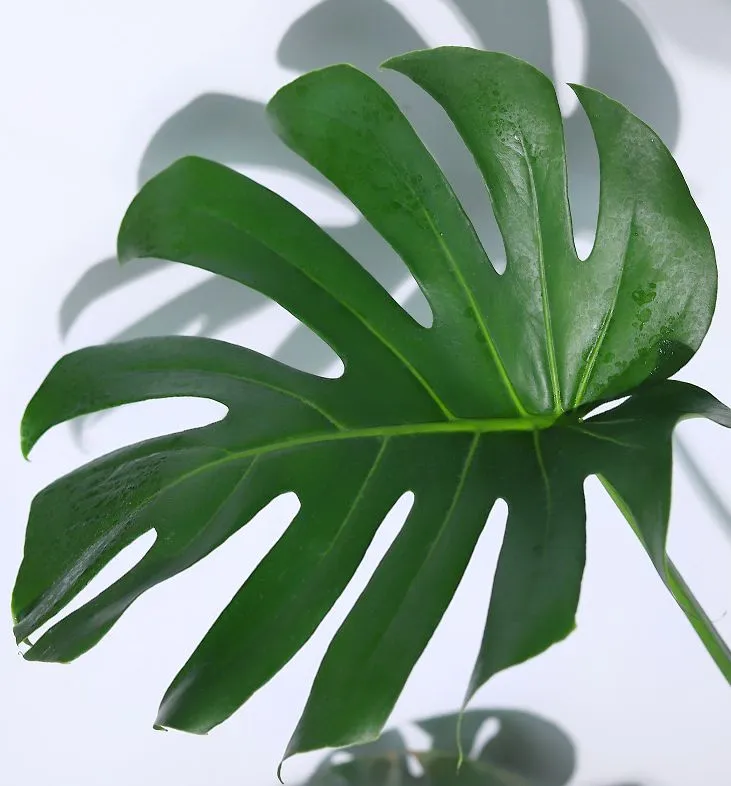 Monstera is a tropical foliage plant. Monstera prefers high air humidity (50% ~ 75%). Monstera can tolerate a slightly dry environment for a period of time. However, if the indoor environment is dry for a long time and the relative humidity is less than 40%, the leaves will turn yellow and the ends of the leaves will turn brown.
Monstera is a tropical foliage plant. Monstera prefers high air humidity (50% ~ 75%). Monstera can tolerate a slightly dry environment for a period of time. However, if the indoor environment is dry for a long time and the relative humidity is less than 40%, the leaves will turn yellow and the ends of the leaves will turn brown.
At this time, you can cut some of the more serious Monstera leaves, just increase the ambient humidity, and occasionally spray the water around, regularly cleaning the leaves. You can put some pebbles on the tray, then fill it with appropriate water, and place the potted plants on the pebbles. You can also continuously increase the environmental humidity to reduce the yellow leaves of Monstera.
At this time, the solution to the yellow leaf Monstera is to pour water once in time. In addition, pay attention to cleaning the leaf surface and spray some fog water on the leaves, so that the turtle backed bamboo can recover to a healthy state as soon as possible.
Another cause of yellow leaf Monstera is excessive watering or poor drainage of basin soil, resulting in water in the soil all the time. It is also possible that there is water in the supporting basin at the bottom of the flowerpot and it is not poured out in time, which will also lead to moisture and water in the soil all the time.
If the soil is too wet, it will lead to the yellow leaves at the bottom of the rhizome. The yellow leaves look like they are soaked in water, and the edges of the leaves will turn yellow or brown, which will eventually lead to the blackening and wilting of the leaves, and in serious cases, the rhizome will rot.
Once there is too much water, remove the yellow leaves of Monstera in time, dry the basin soil in time, and check whether the root system is rotten. When the weather is cold in winter, the growth of Monstera will slow down or even stop growing. Watering must be controlled at this time; In summer, when the temperature is high and the ventilation is good, the watering frequency should be increased to avoid long-term soil drought. (Read More: Monstera Root Rot - Signs & How to Treat)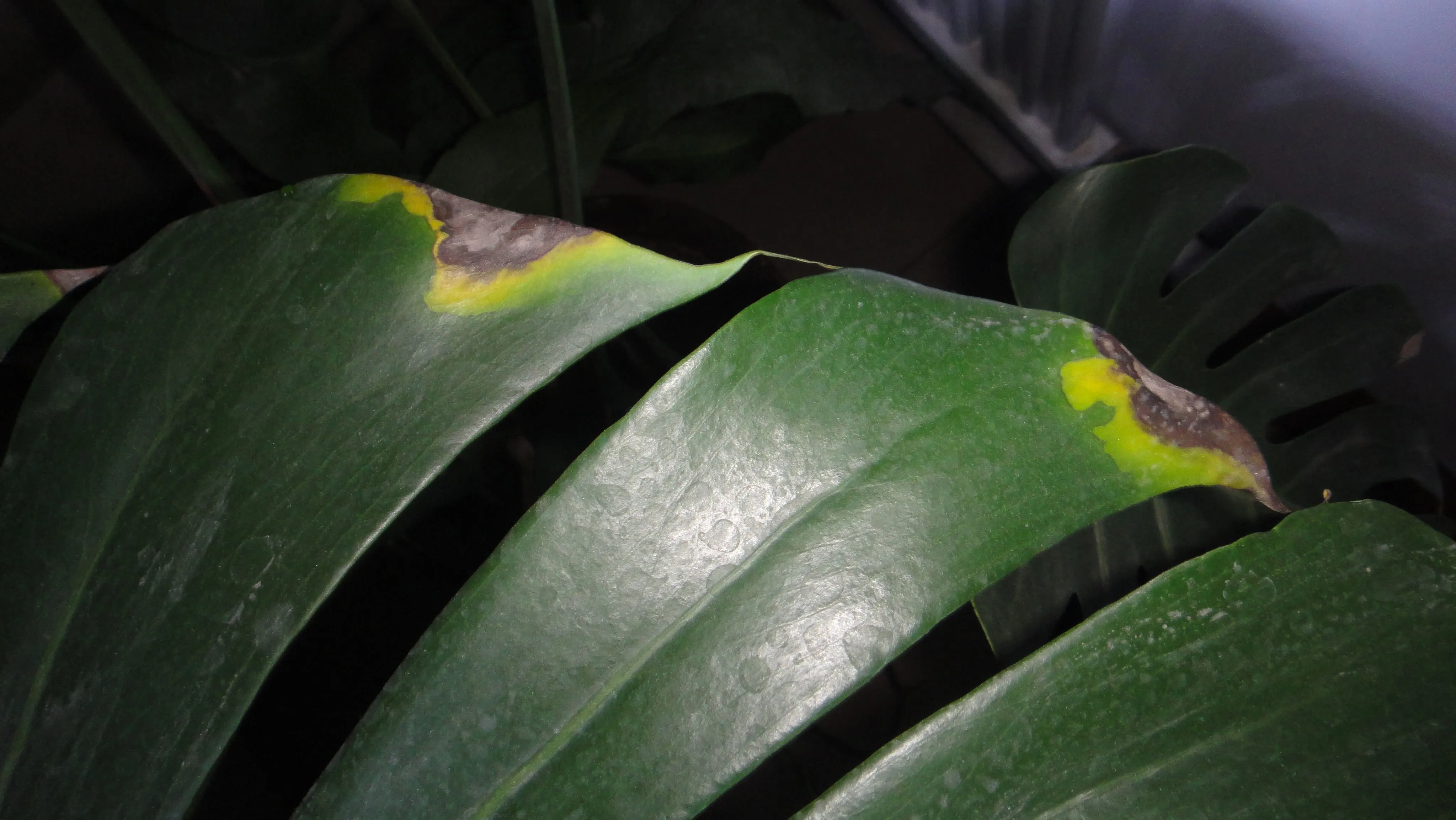 Monstera is a kind of foliage plant growing in the rain forest. Originally, it grows in the shade of trees. Monstera prefers to scatter light. If the sun is exposed to strong light and high temperature, it is easy to burn the leaves. The tip of the leaves will first turn brown and slowly dry and yellow, and the yellow leaves of Monstera will be lighter.
Monstera is a kind of foliage plant growing in the rain forest. Originally, it grows in the shade of trees. Monstera prefers to scatter light. If the sun is exposed to strong light and high temperature, it is easy to burn the leaves. The tip of the leaves will first turn brown and slowly dry and yellow, and the yellow leaves of Monstera will be lighter.
In case of sunburn all the time, it is necessary to move the potted Monstera to a slightly shaded place in time, cut off the sunburned monstera yellow leaves in time, and let its leaves return to the green state.
However, if we place Monstera potted plants in a dark environment, excessive shading will also cause the leaves to turn yellow and fall off, the growth will slow down, and the leaf color will become dim. At this time, we should slightly increase the light and move to a place with bright light, but we should avoid moving to a place with more sunshine at once, otherwise the stems and leaves will be sunburned and lead to Monstera yellow leaves.
Where there is floor heating, avoid placing potted Monstera on the floor heating, otherwise the leaves will turn yellow. You can place it in a ventilated and transparent place and maintain the temperature above 10 degrees to reduce the yellow leaves of Monstera.
When we see that the root of Monstera has grown an excavated surface or has grown out of the drainage hole at the basin bottom, we should change the basin in time. Generally, we should change the basin after warm spring to avoid changing the basin when it is hot in summer and cold in winter.
After changing the pot, we should put it in a ventilated and transparent place in time to keep the light bright and do not bask in too much sunlight. In addition, if we find that the yellow leaves of Monstera appear, we should cut them off in time. Do not apply fertilizer in the first two months after transplanting, and maintain a certain air humidity. When the soil is dry 3 ~ 5cm below the surface, we should water it again.
If we accidentally fertilize Monstera too much, we can wash the basin soil with a large amount of water. If it has been a period of time, we should change the basin in time, clean up the original old soil, transplant again, and put it in a ventilated and shaded place to ease.
If the veins of Monstera's leaves are still green, but the leaf surface turns yellow as a whole, it is due to the excessive deposition of saline and alkaline substances in the soil. Long term replenishment of water with tap water will lead to the overall yellowing of Monstera. We need to wash the basin soil with a lot of clean water to replenish some organic fertilizer and water to Monstera.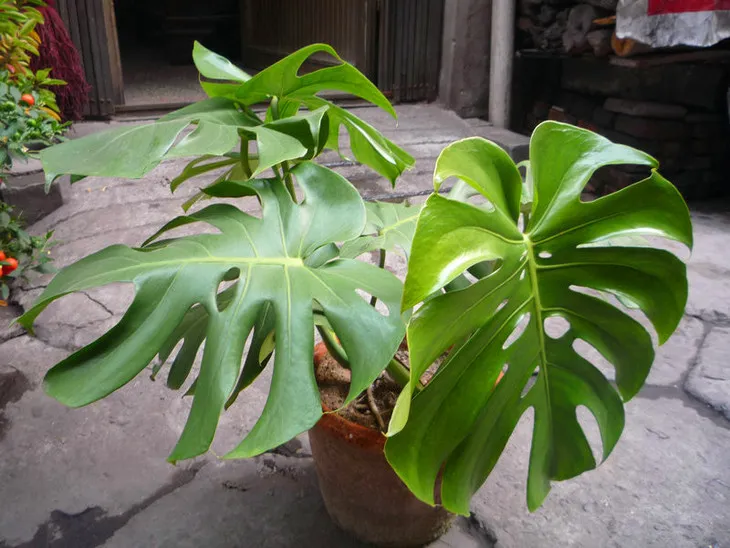 If some erythema appears on the leaf surface of Monstera or the leaf turns yellow as a whole, it may be caused by infection with diseases and pests. If pests are found, such as red spider, it is caused by excessive drying, poor ventilation and high temperature.
If some erythema appears on the leaf surface of Monstera or the leaf turns yellow as a whole, it may be caused by infection with diseases and pests. If pests are found, such as red spider, it is caused by excessive drying, poor ventilation and high temperature.
At this time, we must cut off the yellow leaves of Monstera that are seriously infected with insects in time, and spray some soapy water in time. In serious cases, we can spray abamectin or damilin.
If the yellow leaves of Monstera are caused by aphid infection, wash it with a large amount of water in time, and spray some soapy water. For example, use one or two milliliters of soapy water, mix it with about one liter of clean water, stir it evenly, and then spray it on the leaf surface, leaf back and rhizome.
Monstera is occasionally infected with fungal diseases, such as powdery mildew. White powder appears on the leaf surface. It is usually caused by the humid environment and poor ventilation. It is timely sprayed with chlorothalonil or methyltobuzin solution to remove it.
If some brown or yellow spots appear on the leaves of Monstera and gradually become plaques, it is infected with leaf spot disease. We need to spray mancozeb or chlorothalonil solution in time to remove it.
No matter what growth stage Monstera is in, it can't withstand direct light exposure. Due to the vigorous growth of stems and leaves and poor air circulation, it will also be affected. Therefore, try to improve the smooth air circulation around, so that Monstera stems and leaves can breathe more and maintain a good growth state.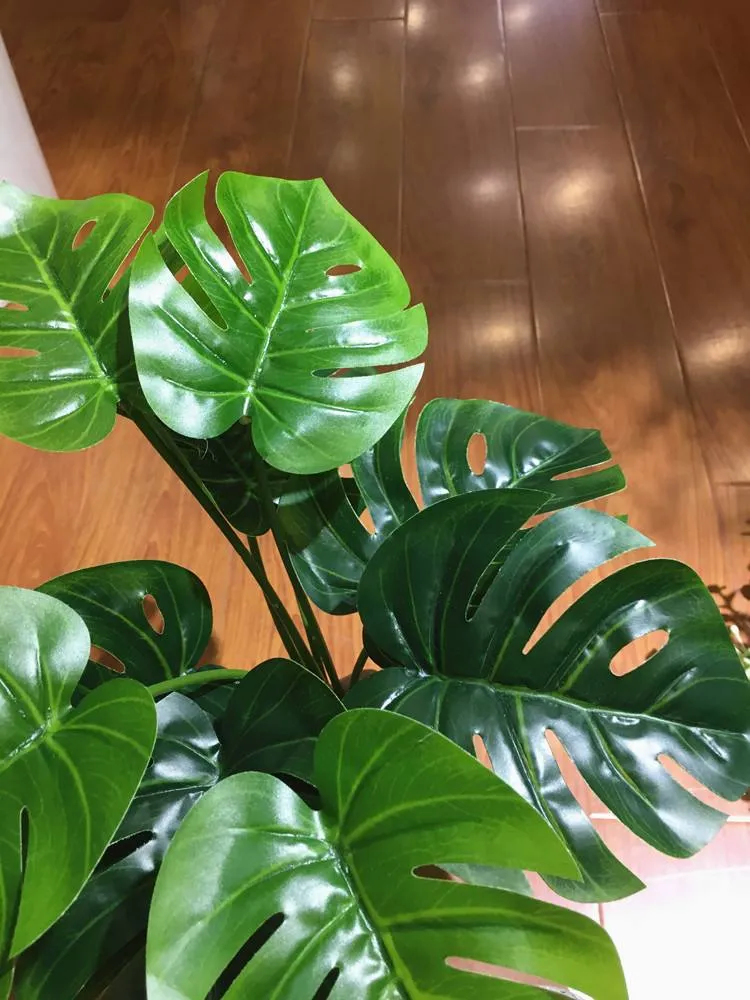 After Monstera has yellow leaves, it needs to be trimmed. However, not all yellowed Monstera leaves need to be cut off. The only leaves that need to be pruned are those Monstera leaves that have seriously turned yellow, and there is basically no possibility of restoring the yellow leaves. If only a small part of some leaves turn yellow, or only temporarily turn yellow due to lack of some nutrients, and there is a possibility of recovery, pruning may not be necessary.
After Monstera has yellow leaves, it needs to be trimmed. However, not all yellowed Monstera leaves need to be cut off. The only leaves that need to be pruned are those Monstera leaves that have seriously turned yellow, and there is basically no possibility of restoring the yellow leaves. If only a small part of some leaves turn yellow, or only temporarily turn yellow due to lack of some nutrients, and there is a possibility of recovery, pruning may not be necessary.
Read More:
Low HumidityWatering ProblemsLighting ProblemsTemperature ProblemsRepotting ProblemsFertilizer ProblemsPests & DiseasesCan Monstera Yellow leaves turn green again?Should I Remove Yellow Leaves off Monstera?
Low Humidity

At this time, you can cut some of the more serious Monstera leaves, just increase the ambient humidity, and occasionally spray the water around, regularly cleaning the leaves. You can put some pebbles on the tray, then fill it with appropriate water, and place the potted plants on the pebbles. You can also continuously increase the environmental humidity to reduce the yellow leaves of Monstera.
Watering Problems
Improper watering is the most common reason for the yellow leaves of potted Monstera. If your turtle backed bamboo has some yellow leaves, the first thing is to check the dry and wet condition of the pot soil. If the basin soil has not been watered for a long time, the soil looks dry and white, and the stems and leaves of Monstera shrink and the leaves curl up, that is, excessive drought causes the leaves to turn yellow.At this time, the solution to the yellow leaf Monstera is to pour water once in time. In addition, pay attention to cleaning the leaf surface and spray some fog water on the leaves, so that the turtle backed bamboo can recover to a healthy state as soon as possible.
Another cause of yellow leaf Monstera is excessive watering or poor drainage of basin soil, resulting in water in the soil all the time. It is also possible that there is water in the supporting basin at the bottom of the flowerpot and it is not poured out in time, which will also lead to moisture and water in the soil all the time.
If the soil is too wet, it will lead to the yellow leaves at the bottom of the rhizome. The yellow leaves look like they are soaked in water, and the edges of the leaves will turn yellow or brown, which will eventually lead to the blackening and wilting of the leaves, and in serious cases, the rhizome will rot.
Once there is too much water, remove the yellow leaves of Monstera in time, dry the basin soil in time, and check whether the root system is rotten. When the weather is cold in winter, the growth of Monstera will slow down or even stop growing. Watering must be controlled at this time; In summer, when the temperature is high and the ventilation is good, the watering frequency should be increased to avoid long-term soil drought. (Read More: Monstera Root Rot - Signs & How to Treat)
Lighting Problems

In case of sunburn all the time, it is necessary to move the potted Monstera to a slightly shaded place in time, cut off the sunburned monstera yellow leaves in time, and let its leaves return to the green state.
However, if we place Monstera potted plants in a dark environment, excessive shading will also cause the leaves to turn yellow and fall off, the growth will slow down, and the leaf color will become dim. At this time, we should slightly increase the light and move to a place with bright light, but we should avoid moving to a place with more sunshine at once, otherwise the stems and leaves will be sunburned and lead to Monstera yellow leaves.
Temperature Problems
Monstera is a typical tropical foliage plant. Its most suitable growth temperature is between 18 ~ 27 degrees. If the temperature is lower than 10 degrees, it will start to stop growing. If the temperature is lower than 4 degrees, Monstera may cause frostbite and produce yellow leaves. If the potted plants of Monstera are placed next to heating or air conditioning, they will also cause yellow leaves.Where there is floor heating, avoid placing potted Monstera on the floor heating, otherwise the leaves will turn yellow. You can place it in a ventilated and transparent place and maintain the temperature above 10 degrees to reduce the yellow leaves of Monstera.
Repotting Problems
Monstera yellow leaves may also appear after changing pots. If you accidentally hurt the roots of Monstera when changing pots and do not give appropriate environment after transplanting, the leaves will turn yellow.When we see that the root of Monstera has grown an excavated surface or has grown out of the drainage hole at the basin bottom, we should change the basin in time. Generally, we should change the basin after warm spring to avoid changing the basin when it is hot in summer and cold in winter.
After changing the pot, we should put it in a ventilated and transparent place in time to keep the light bright and do not bask in too much sunlight. In addition, if we find that the yellow leaves of Monstera appear, we should cut them off in time. Do not apply fertilizer in the first two months after transplanting, and maintain a certain air humidity. When the soil is dry 3 ~ 5cm below the surface, we should water it again.
Fertilizer Problems
Monstera has little demand for fertilizer. Generally, it only needs to supplement the general-purpose water-soluble leaf fertilizer every 3 ~ 4 weeks in spring and summer. Moreover, when applying fertilizer to potted Monstera maintained indoors, it only needs to give half of the usual concentration, and fertilizer cannot be left on the leaf surface, otherwise it will also cause fertilizer injury and lead to Monstera yellow leaves.If we accidentally fertilize Monstera too much, we can wash the basin soil with a large amount of water. If it has been a period of time, we should change the basin in time, clean up the original old soil, transplant again, and put it in a ventilated and shaded place to ease.
If the veins of Monstera's leaves are still green, but the leaf surface turns yellow as a whole, it is due to the excessive deposition of saline and alkaline substances in the soil. Long term replenishment of water with tap water will lead to the overall yellowing of Monstera. We need to wash the basin soil with a lot of clean water to replenish some organic fertilizer and water to Monstera.
Pests & Diseases

At this time, we must cut off the yellow leaves of Monstera that are seriously infected with insects in time, and spray some soapy water in time. In serious cases, we can spray abamectin or damilin.
If the yellow leaves of Monstera are caused by aphid infection, wash it with a large amount of water in time, and spray some soapy water. For example, use one or two milliliters of soapy water, mix it with about one liter of clean water, stir it evenly, and then spray it on the leaf surface, leaf back and rhizome.
Monstera is occasionally infected with fungal diseases, such as powdery mildew. White powder appears on the leaf surface. It is usually caused by the humid environment and poor ventilation. It is timely sprayed with chlorothalonil or methyltobuzin solution to remove it.
If some brown or yellow spots appear on the leaves of Monstera and gradually become plaques, it is infected with leaf spot disease. We need to spray mancozeb or chlorothalonil solution in time to remove it.
Can Monstera Yellow leaves turn green again?
If you find it early, Monstera yellow leaves can turn green again. Don't look at the big and strong leaves of Monstera, but in fact, in many cases, the growth is still very fragile. For example, Monstera cannot stay in strong light, no light and dry environment for a long time, but the yellow leaves of Monstera caused by no light are easier to recover, unlike sunburn, frostbite and scorched edges.No matter what growth stage Monstera is in, it can't withstand direct light exposure. Due to the vigorous growth of stems and leaves and poor air circulation, it will also be affected. Therefore, try to improve the smooth air circulation around, so that Monstera stems and leaves can breathe more and maintain a good growth state.
Should I Remove Yellow Leaves off Monstera?

Read More:
- Why My Monstera Leaves Curling - 8 Reasons And How to Fix
- How to Save My Overwatered Monstera
- Monstera Lechleriana Care Guide 2021
- Monstera Borsigiana VS Monstera Deliciosa
- How to Grow and Care for Split Leaf Philodendron
- How to Grow and Care for Monstera Obliqua Plant
- Philodendron Monstera Care & Propagation Guide
- Rhaphidophora Tetrasperma (Mini Monstera) Care Guide
Latest Updated
- Benefits of Bugleweed - 7 Science-backed Health Benefits
- Bugleweed Dangers & Side Effects - Is It Poisonous?
- How to Plant Evergreen Trees - What You Should Know
- When to Plant Evergreens - Grow Guide for Evergreen Trees
- 12 Wonderful Evergreen Shrubs for Your Garden
- 12 Popular Evergreen Plants with Pictures for Beginners
- When And How To Prune A Lilac Bush Like a Pro
- How to Grow & Care for Lilac Vine (Hardenbergia Violacea)
- Japanese Lilac Tree (Syringa Reticulata) Care & Propagation Guide
- Shumard Oak Pros and Cons - What to Know
Popular Articles
- Winter maintenance of Antirrhinum Majus
- How to Grow Terminalia Mantaly Tree
- How to Grow and Care for Crossostephium Chinense
- How to grow Antirrhinum Majus in spring
- Peristeria Elata (Dove Orchid) Profile: Info & Care Guide
- Underwatered Snake Plant (Sansevieria Trifasciata) - Signs And How To Fix
- How to Care for Brazilian Jasmine Plant (Mandevilla Sanderi)
- How to Grow & Care for Graptopetalum Purple Delight in Summer
- Rosa Chinensis (China Rose): Plant Growing & Care Tips
- How to Care for Baby Sun Rose (Aptenia Cordifolia)